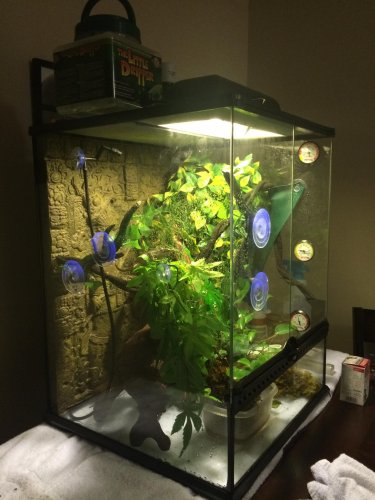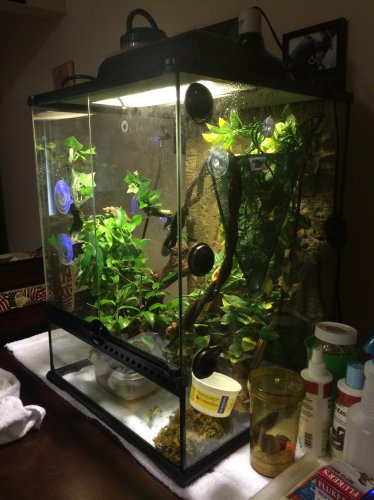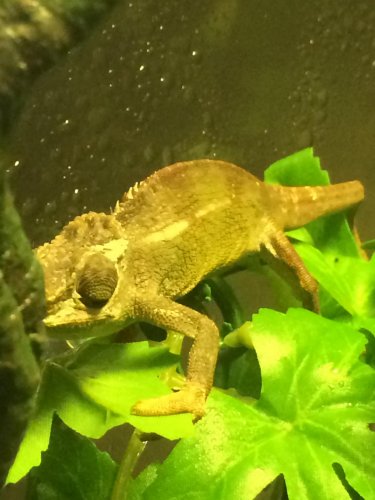Hello all,
I just joined this forum site today. I have a male dwarf Fischer's Cham, not sure how old he is. I assume he's an adult as he looks to be the same size as pictures I've referenced. I was looking for a specific care sheet for dwarf Fischer's. I have had a hard time seeing that they aren't one of the more popular species. Any advice/leads would be much appreciated!!
I just joined this forum site today. I have a male dwarf Fischer's Cham, not sure how old he is. I assume he's an adult as he looks to be the same size as pictures I've referenced. I was looking for a specific care sheet for dwarf Fischer's. I have had a hard time seeing that they aren't one of the more popular species. Any advice/leads would be much appreciated!!














